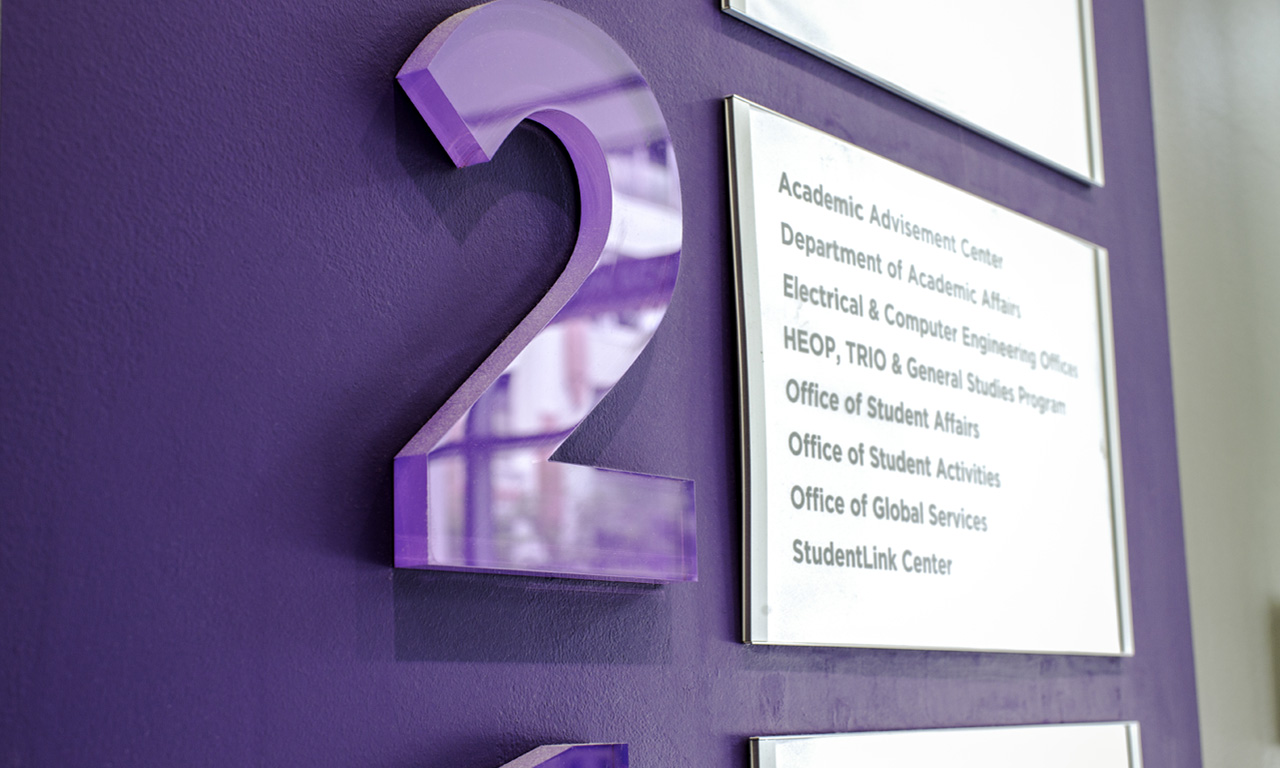There are a variety of reasons why the navigation of a site may change; construction of new or existing buildings, the unexpected closure of an entrance, a broken elevator, or a pandemic. In all these cases, planned or unplanned, wayfinding systems often need to adapt to ensure that visitors have a seamless journey, despite adjustments to the environment.
Large-scale projects where construction is phased may result in different paths of travel, access points, vertical circulation change, or different naming of destinations as the build evolves. In projects where there are seasonal changes or special events that are rolled out, clients want to communicate the most up-to-date information to visitors. Occasionally, changes aren’t planned, like when an emergency or crisis occurs and a location needs to be repurposed, or a healthcare facility needs to reorient access points for control of entry.
Though these situations vary greatly, they all require a degree of flexibility to respond to shifting needs, and this impacts how people will navigate the space. There are a number of solutions for an adaptive system, both analog and digital, and begin with the planning process to consider how “temporary” a situation will be. In the case of an acute crisis, “temporary” might be just a few days or weeks, but in complex construction projects, “temporary” could mean a year or more.
ANALOG SOLUTIONS
There are a number of solutions in the wayfinding toolkit that can address temporary needs. In today’s technology-driven world we sometimes forget that the best solutions are often the simplest. For example, perhaps you have just 12 hours to implement last-minute directional signage because of an unforeseen circumstance. Paper signs will work just fine if the timeline is short, but it’s worth laminating them or using acrylic cases for protection if they will be in place for more than a few days. Even this small extra step will help project a level of confidence and professionalism to visitors.
Vinyl overlays provide a longer-term option as they can be applied to many different surfaces like construction barriers, floors, or even stair treads and risers and can last for several months depending on traffic and the density of users that may come in contact with them. When working with Randall’s Island Park Alliance, we designed a three-sided permanent sign for the entry points to the park and reserved one side for seasonal events updates. When there are no events, the panel shows a duplicate map of the park so that multiple people have access to the map at the same time, but when events begin in the spring, RIPA places a vinyl overlay to advertise upcoming events.
Finally, there are always free-standing options like sandwich boards where mounting locations are lacking. They are an especially good option when the signage needs to be removed and stored on a daily basis.
DYNAMIC SOLUTIONS
If dynamic signage is already in place, then screen content can be easily updated to reflect new and evolving information. If dynamic signage is not installed but the budget allows, there are free-standing digital options available once data and power sources are coordinated, which may include Bluetooth, sensors, or beacons. As technology continues to be integrated into our daily lives, QR codes and wayfinding apps are becoming more commonplace and can provide real-time information for users as they navigate a changing environment. Even with these high-tech options, the real key to developing a successful flexible system is determining what your needs are during planning sessions with the stakeholders that are impacted by the changes. Through this planning and coordination, finding a solution that’s most appropriate will solve most issues quickly, and have the team on board as the needs of visitors continue to evolve.
We can help you consider unique wayfinding solutions for you and your visitors. See our portfolio for examples of projects or drop us a line at hello@viacollective.com to connect with us and discuss your project.

